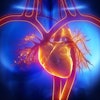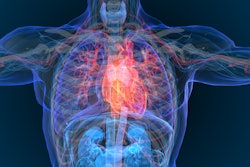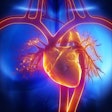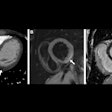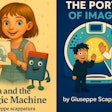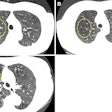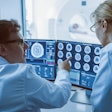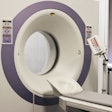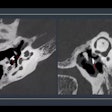The use of both cardiac CT and cardiac MRI increased in the Medicare population over the past seven years, according to research presented November 29 at the RSNA meeting.
And it appears that radiologists are reading more cardiac CT exams, but not cardiac MRI studies, presenter Mustafa Al-Ogaili, MD, of the Mayo Clinic in Phoenix, AZ, told session attendees. Al-Ogaili delivered results from a study that tracked the use of cardiac CT, while Zahra Beizavi, MD, of Columbia University in New York City outlined the use trends for cardiac MRI.
Al-Ogaili's research used data from cardiac CT CPT codes culled from the Part B Physician and Other Supplier Public Use File (POSPUF) database between 2013 and 2020. The team tracked volumes by provider type (cardiologists, radiologists, and "other") and practice setting (hospital and nonhospital).
The investigators found that 38, 806 cardiac CT exams were performed in 2013 and 112,909 in 2020, an increase of 191%. The cardiac CT exam use rate increased from 1.1 per 1,000 Medicare enrollees in 2013 to 3.2 per 1,000 enrollees in 2020, an increase of 191%.
The team also found that not only did the overall percentage of radiologists reading cardiac CT exams increase between 2013 and 2020 -- with a simultaneous decrease in the percentage of cardiologists reading the exams -- the percentage of radiologists reading cardiac CT exams in both hospital and office settings increased as well, again with a concurrent decrease in the percentage of cardiologists reading the exams.
| Trends in cardiac CT exam interpretation, 2013 and 2020 | ||
|---|---|---|
| 2013 | 2020 | |
| Overall percentage of cardiac CT exams interpreted | ||
| Radiologists | 42.8% | 58.4% |
| Cardiologists | 49.2% | 37.1% |
| Hospital setting | ||
| Radiologists | 52% | 58.3% |
| Cardiologists | 48% | 41.7% |
| Office setting | ||
| Radiologists | 32% | 58.6% |
| Cardiologists | 56.8% | 41.4% |
What could be causing this trend? Al-Ogaili's listed a number of factors:
- Expanded indications for cardiac CT
- Increased perceived utility and value of cardiac CT
- Increased capacity of radiologists to expand cardiac CT services
- Variations in referral patterns between radiologists and cardiologists.
He concluded his presentation by suggesting that future research explore cardiac CT trends in other patient populations (that is, commercially insured patients and inpatients) and whether it is being used appropriately.
As for cardiac MRI, the number of exams increased annually between 2013 and 2019, and cardiologists read the majority of them, Beizavi reported.
Her team conducted a similar study as that performed by Al-Ogaili, also using POSPUF data but between the years 2013 and 2019.
The investigators found that 13,354 cardiac MRI exams were performed in 2013 and 31,662 in 2020, an increase of 57.8%. The cardiac MRI exam use rate increased from 3.6 per 10,000 Medicare enrollees in 2013 to 8.4 per 10,000 enrollees in 2020, an increase of 133.3%.
But cardiologists maintained their "market share" of exam interpretations through the study period and across practice types, although in 2020 radiologists and cardiologists had similar reading percentages in the office setting.
| Trends in cardiac MRI exam interpretation, 2013 and 2019 | ||
|---|---|---|
| 2013 | 2019 | |
| Overall percentage of cardiac MRI exams interpreted | ||
| Radiologists | 35.3% | 36.1% |
| Cardiologists | 58.5% | 57.7% |
| Hospital setting | ||
| Radiologists | 33.9% | 34.5% |
| Cardiologists | 59.1% | 60.3% |
| Office setting | ||
| Radiologists | 40.7% | 45.1% |
| Cardiologists | 56.3% | 42.5% |
Still, although cardiologists continue to read more cardiac MRIs overall and across practice types, radiologists have increased their reading percentages, according to Beizavi. She cited the same trends that Al-Ogaili did for what could be prompting these trends.
"Use of cardiac MRI has increased, with radiologists increasing their market share of these studies in all practice settings," she concluded.
